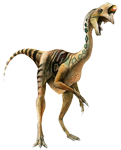Random Topic V3
Re: Random Topic V3
Still farming basarios on Nekoht's quests. The thing's a *******.
"If none can know what lies ahead, then losing one's way is just human nature."~ Yoshimitsu
"Would you hear my desire? To take this foul blade, and use it to blot out the light forever!" ~ Ganondorf
"Would you hear my desire? To take this foul blade, and use it to blot out the light forever!" ~ Ganondorf
-

Godzilla Forever - Leviathan
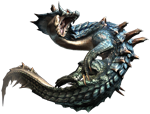
- Posts: 14715
- Joined: Sat Sep 05, 2009 3:19 am
- Location: In San Fransisco defeating the MUTOs.
Re: Random Topic V3
Need Carbalite ore and basarios carapaces by the dozens. I'm trying to make its armor set to fight the Nekoht Khezu (It's relatively resilient to all elements save Dragon), upgrade my Khezu Shock Sword with aforementioned Khezu parts, before fighting the dual Monoblos urgent quest.
"If none can know what lies ahead, then losing one's way is just human nature."~ Yoshimitsu
"Would you hear my desire? To take this foul blade, and use it to blot out the light forever!" ~ Ganondorf
"Would you hear my desire? To take this foul blade, and use it to blot out the light forever!" ~ Ganondorf
-

Godzilla Forever - Leviathan

- Posts: 14715
- Joined: Sat Sep 05, 2009 3:19 am
- Location: In San Fransisco defeating the MUTOs.
Re: Random Topic V3
Judgement and Fire Dragonsword. Judgement seems to be slightly more effective due to higher attack power. might need to use my Rathalos Soul (low-rank) set instead of my Ioprey U suit, due to it giving me an attack and affinity boost.
"If none can know what lies ahead, then losing one's way is just human nature."~ Yoshimitsu
"Would you hear my desire? To take this foul blade, and use it to blot out the light forever!" ~ Ganondorf
"Would you hear my desire? To take this foul blade, and use it to blot out the light forever!" ~ Ganondorf
-

Godzilla Forever - Leviathan

- Posts: 14715
- Joined: Sat Sep 05, 2009 3:19 am
- Location: In San Fransisco defeating the MUTOs.
Re: Random Topic V3
Poison dur. halved (2 toxin jewels make it "Negate") and I recovery speed +1 (methinks).
"If none can know what lies ahead, then losing one's way is just human nature."~ Yoshimitsu
"Would you hear my desire? To take this foul blade, and use it to blot out the light forever!" ~ Ganondorf
"Would you hear my desire? To take this foul blade, and use it to blot out the light forever!" ~ Ganondorf
-

Godzilla Forever - Leviathan

- Posts: 14715
- Joined: Sat Sep 05, 2009 3:19 am
- Location: In San Fransisco defeating the MUTOs.
Re: Random Topic V3
It was relatively easy, but its sheer speed makes it a nuisance to hunt. Especially that damned double-kick attack (he can do it like four times in a row!).
"If none can know what lies ahead, then losing one's way is just human nature."~ Yoshimitsu
"Would you hear my desire? To take this foul blade, and use it to blot out the light forever!" ~ Ganondorf
"Would you hear my desire? To take this foul blade, and use it to blot out the light forever!" ~ Ganondorf
-

Godzilla Forever - Leviathan

- Posts: 14715
- Joined: Sat Sep 05, 2009 3:19 am
- Location: In San Fransisco defeating the MUTOs.
Re: Random Topic V3
that is the beauty of the OMGWTFBBQ jump  . you can avoid almost anything with it. If you're feeling lucky, or know your prey well enough, you can avoid attacks with just a roll. if you can pull that off successfully, then you can start counting yourself an experienced hunter
. you can avoid almost anything with it. If you're feeling lucky, or know your prey well enough, you can avoid attacks with just a roll. if you can pull that off successfully, then you can start counting yourself an experienced hunter 
"Ah yes, organised chaos. the sign of a clever but ever-busy mind. To the perpetrator, a carefully woven web of belongings and intrigue, but to the bystander? Madness!"
–William Beckett, Lore of Leyuna RPG

–William Beckett, Lore of Leyuna RPG

-

The Kingpin - Webmaster

- Posts: 22584
- Joined: Thu Jan 01, 1970 12:00 am
- Location: Kuwait
Re: Random Topic V3
I have finally found a use for giant, flightless Pterosaurs... and I'm being semi-original about it....
Bowser: Here we go again...
Bowser: Here we go again...

All hail the glory that is Tenshi, the Sunkern!
-
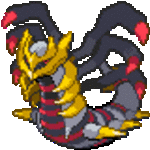
Giratina93 - Psuedo-Wyvern
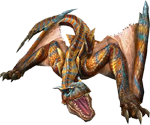
- Posts: 11587
- Joined: Sun Jan 04, 2009 9:47 pm
- Location: Studying the ancient art of perfection
Re: Random Topic V3
Here is my logic: Many people assume that Quetzalcoatlus and other Azhdarchids flew, because if they weren't able to, they'd be sitting ducks for a Tyrannosaur. However, recent evidence suggests that most weight estimates for Quetzalcoatlus and co. have been far too light up till now, and that the real things weighed far more that previously thought. Perhaps, even far too heavy to fly.
Which leaves us with a grounded giant Pterosaur. Despite what people may think, Quetzacoatlus and co. may have actually been pretty adapt at being on the ground. When one analyzes the leg bones of Quetzalcoatlus and co, one disovers, after a bit of cross-refrencing, that they have fore and hind limb proportions more similar to modern running ungulate mammals (You know, liek horses and llamas) than to their smaller cousins. This would make sense for a creature that was land-based.
Now, the main problem here is, how did it protect itself from carnivores? At first, one might say that these giant Pterosaurs lived on isolated islands, away from predators, allowing them to live peaceful, terrestrial lives, much like the more modern Elephant Birds and Moas.
But that theory is blown out of the water when one sees that Quetzalcoatlus fossils have been found in the same vicinity as Alamosaurus, a large north american saurpod that lived in semi-arid plains. This means that Quetzalcoatlus and co. had to deal with mainland predators, like raptors and tyrannosaurs in North America, and Abeilsaurs in South America and the European islands at the time.
So, how DID they protect themselves from predators? Sure, their heads were over 10 feet long, with powerful beaks, but against a large carnivore... that simply wouldn't do. They probably didn't produce a powerful toxious odor that killed any incoming carnivores within a 100 feet of them at all time. Sure, they could probably move reasonably well on land, but not fast enough to outrun a raptor pack...
I'll leave it to you guys to figure out my likely idea on how Quetzalcoatlus and co. protected themselves... and I'll leave you with a single hint... It's in the second Jurassic Park book... if you can't figure it out from that, I'll give you a second hint...
Which leaves us with a grounded giant Pterosaur. Despite what people may think, Quetzacoatlus and co. may have actually been pretty adapt at being on the ground. When one analyzes the leg bones of Quetzalcoatlus and co, one disovers, after a bit of cross-refrencing, that they have fore and hind limb proportions more similar to modern running ungulate mammals (You know, liek horses and llamas) than to their smaller cousins. This would make sense for a creature that was land-based.
Now, the main problem here is, how did it protect itself from carnivores? At first, one might say that these giant Pterosaurs lived on isolated islands, away from predators, allowing them to live peaceful, terrestrial lives, much like the more modern Elephant Birds and Moas.
But that theory is blown out of the water when one sees that Quetzalcoatlus fossils have been found in the same vicinity as Alamosaurus, a large north american saurpod that lived in semi-arid plains. This means that Quetzalcoatlus and co. had to deal with mainland predators, like raptors and tyrannosaurs in North America, and Abeilsaurs in South America and the European islands at the time.
So, how DID they protect themselves from predators? Sure, their heads were over 10 feet long, with powerful beaks, but against a large carnivore... that simply wouldn't do. They probably didn't produce a powerful toxious odor that killed any incoming carnivores within a 100 feet of them at all time. Sure, they could probably move reasonably well on land, but not fast enough to outrun a raptor pack...
I'll leave it to you guys to figure out my likely idea on how Quetzalcoatlus and co. protected themselves... and I'll leave you with a single hint... It's in the second Jurassic Park book... if you can't figure it out from that, I'll give you a second hint...
Last edited by Giratina93 on Sun Jul 10, 2011 11:16 pm, edited 1 time in total.

All hail the glory that is Tenshi, the Sunkern!
-

Giratina93 - Psuedo-Wyvern

- Posts: 11587
- Joined: Sun Jan 04, 2009 9:47 pm
- Location: Studying the ancient art of perfection
Re: Random Topic V3
Speaking of Jurassic Park, I looked up an idiotic comment from Jack Horner last night regarding the JP3 Spino. He says that it's only a month old and is 43 feet long. I burst out laughing at that one. It also made me decide to ask KP for his estimate on how the big Spino would have been at that age in reality.

-

Iceking - Leviathan

- Posts: 15972
- Joined: Sat Apr 28, 2007 6:34 pm
- Location: crozet, virginia
Re: Random Topic V3
@ KP: Overall, I am able to avoid taking any damage, save from when I get a bit cocky.
@ IK: WTF? You serious?
@ IK: WTF? You serious?
"If none can know what lies ahead, then losing one's way is just human nature."~ Yoshimitsu
"Would you hear my desire? To take this foul blade, and use it to blot out the light forever!" ~ Ganondorf
"Would you hear my desire? To take this foul blade, and use it to blot out the light forever!" ~ Ganondorf
-

Godzilla Forever - Leviathan

- Posts: 14715
- Joined: Sat Sep 05, 2009 3:19 am
- Location: In San Fransisco defeating the MUTOs.
Re: Random Topic V3
-_-
OK. I'll be fair. I'll let you keep your opinion. You have a right to your own opinion and beliefs. But let me just reclarify to you the reason I and likely most of the paleontologically aware community think it's ridiculous:
1) Quetzalcoatlus and other pterosaurs are large, yes. they would've been heavy from our point of view, yes. but not compared to the surface area of their wings. the lift produced by such massive wings is substantial. simple example close to home can be seen in modern aircraft, which are INSPIRED by gliding creatures that, though unrelated, were very much like Pterosaurs in overall design.
Condors for example. wingspans of 10 feet being regularly noted, with weights reaching and sometimes exceeding 24 lbs, or 15 Kgs for those of you like myself who use the SI [International System of Measurement]. The weight of animals like these, both past and present, were likely well within range of the potential lift generation of their wings.
2) Unless you want to argue that Pterosaurs had no wing membranes and could run with those enormous wing bones flailing all over the place, There is no way you can affirm a pterosaur's ability to move with any semblance of speed. it would not be able to run, and even it's walking would be hindered by the wing membranes [ever try running with a large amount of fabric around your legs? trust me. it's difficult. that's why you don't see Arab sports teams running around in formal clothing. or why you never see stories of Ancient Japanese fighting in completely closed, sealed kimonos. or why female Olympic Runners don't run with full length gowns instead of shorts. it's impossible to move quickly when your limbs are so heavily bound]. Try tying a horse's legs with large sheets of fabric, then try and make it run. I'll save you the trouble. it won't. it'll probably hobble, but that's about it.
3) Pterosaur beaks made up as much as half their total body length. the purpose for these beaks was to give more room to gather fish. I would suggest a theory that they were pelican-like, and had large pouches to capitalise on their massive beaks' potential as a fishing tool. but that's just one possibility among many to be applied to animals that were primarily piscivorous. their beaks would've made unwieldy weapons in a fight. try swinging everything from your hips upwards at someone as a weapon. try striking several blows in rapid succession. watch as you fall over, dizzy, exhausted and amidst laughter as your opponent looks at you wondering wtf you were doing. something similar would've happened if Ornithocheirus, Quetzalcoatlus or other giant pterosaurs tried to use their beaks as weapons.
I have already mentioned the noxious gas possibility and it's improbability [so what, giant land-bound, crippled bird-like death-skunks? no. just no.] I've also stated above why speed was likely absent from a 'land-bound' Pterosaur's dictionary. If you were to line it up for a race against a similar-sized turtle [assuming for a moment that the activity and mobility of said turtle is not diminished from it's smaller kin], I'd personally put my money on the turtle to win.
4) While I highly respect Michael Crichton as an author and as the writer whose most heavily influenced my childhood [admittedly by extension of the JP movies. I am unlucky enough to not have access to the JP books themselves], I must remind you that he is by no means the most knowledgeable person in the field of dinosaur ecology. Fiction is not a source for facts. if that were the case I could go off and say 'Well, Rexes and other large predators could possibly have networked their territories in mutual interest if there was a more dangerous risk facing them all'. possible? perhaps. likely? no.
IK, answering your question, the result would depend on the growth rate of Spinosaurs. assuming for a moment that adult size is 57 feet [a fairly conservative number, not too high, nor too low], and the age of adulthood is age 20, and that growth rate was even throughout it's life [as opposed to the sharp changes seen in T. Rex's growth, which, in itself, is an anomaly even among other species in it's own family], then the JP3 Spino would likely have been about 15 years old. the Rex being 39, I'd take a guess at it being around 18 years of age, since it's fairly close to the believed maximum size of T.Rex. however, if the recent information is accurate, Rex could've been between 46-50 feet in length. that, in turn, would change the measurement, placing the JP3 Rex at about 16 years of age [with the remaining 7 to 11 feet being reached through the remaining 4 years of it's active growth period].
OK. I'll be fair. I'll let you keep your opinion. You have a right to your own opinion and beliefs. But let me just reclarify to you the reason I and likely most of the paleontologically aware community think it's ridiculous:
1) Quetzalcoatlus and other pterosaurs are large, yes. they would've been heavy from our point of view, yes. but not compared to the surface area of their wings. the lift produced by such massive wings is substantial. simple example close to home can be seen in modern aircraft, which are INSPIRED by gliding creatures that, though unrelated, were very much like Pterosaurs in overall design.
Condors for example. wingspans of 10 feet being regularly noted, with weights reaching and sometimes exceeding 24 lbs, or 15 Kgs for those of you like myself who use the SI [International System of Measurement]. The weight of animals like these, both past and present, were likely well within range of the potential lift generation of their wings.
2) Unless you want to argue that Pterosaurs had no wing membranes and could run with those enormous wing bones flailing all over the place, There is no way you can affirm a pterosaur's ability to move with any semblance of speed. it would not be able to run, and even it's walking would be hindered by the wing membranes [ever try running with a large amount of fabric around your legs? trust me. it's difficult. that's why you don't see Arab sports teams running around in formal clothing. or why you never see stories of Ancient Japanese fighting in completely closed, sealed kimonos. or why female Olympic Runners don't run with full length gowns instead of shorts. it's impossible to move quickly when your limbs are so heavily bound]. Try tying a horse's legs with large sheets of fabric, then try and make it run. I'll save you the trouble. it won't. it'll probably hobble, but that's about it.
3) Pterosaur beaks made up as much as half their total body length. the purpose for these beaks was to give more room to gather fish. I would suggest a theory that they were pelican-like, and had large pouches to capitalise on their massive beaks' potential as a fishing tool. but that's just one possibility among many to be applied to animals that were primarily piscivorous. their beaks would've made unwieldy weapons in a fight. try swinging everything from your hips upwards at someone as a weapon. try striking several blows in rapid succession. watch as you fall over, dizzy, exhausted and amidst laughter as your opponent looks at you wondering wtf you were doing. something similar would've happened if Ornithocheirus, Quetzalcoatlus or other giant pterosaurs tried to use their beaks as weapons.
I have already mentioned the noxious gas possibility and it's improbability [so what, giant land-bound, crippled bird-like death-skunks? no. just no.] I've also stated above why speed was likely absent from a 'land-bound' Pterosaur's dictionary. If you were to line it up for a race against a similar-sized turtle [assuming for a moment that the activity and mobility of said turtle is not diminished from it's smaller kin], I'd personally put my money on the turtle to win.
4) While I highly respect Michael Crichton as an author and as the writer whose most heavily influenced my childhood [admittedly by extension of the JP movies. I am unlucky enough to not have access to the JP books themselves], I must remind you that he is by no means the most knowledgeable person in the field of dinosaur ecology. Fiction is not a source for facts. if that were the case I could go off and say 'Well, Rexes and other large predators could possibly have networked their territories in mutual interest if there was a more dangerous risk facing them all'. possible? perhaps. likely? no.
IK, answering your question, the result would depend on the growth rate of Spinosaurs. assuming for a moment that adult size is 57 feet [a fairly conservative number, not too high, nor too low], and the age of adulthood is age 20, and that growth rate was even throughout it's life [as opposed to the sharp changes seen in T. Rex's growth, which, in itself, is an anomaly even among other species in it's own family], then the JP3 Spino would likely have been about 15 years old. the Rex being 39, I'd take a guess at it being around 18 years of age, since it's fairly close to the believed maximum size of T.Rex. however, if the recent information is accurate, Rex could've been between 46-50 feet in length. that, in turn, would change the measurement, placing the JP3 Rex at about 16 years of age [with the remaining 7 to 11 feet being reached through the remaining 4 years of it's active growth period].
"Ah yes, organised chaos. the sign of a clever but ever-busy mind. To the perpetrator, a carefully woven web of belongings and intrigue, but to the bystander? Madness!"
–William Beckett, Lore of Leyuna RPG

–William Beckett, Lore of Leyuna RPG

-

The Kingpin - Webmaster

- Posts: 22584
- Joined: Thu Jan 01, 1970 12:00 am
- Location: Kuwait
Re: Random Topic V3
Very well thought up hypothesis on how old the Spino in the movie would have actually been to be at the size it was. If it was indeed at one month of age, then i'm estimating is that it probably would have been around the size of the movie raptors in reality. Does that sound about right or would it possibly have been a little larger, assuming an even growth rate?

-

Iceking - Leviathan

- Posts: 15972
- Joined: Sat Apr 28, 2007 6:34 pm
- Location: crozet, virginia
Re: Random Topic V3
Gira: I'm sorry, but your theory made me chuckle. I have to agree wih KP on this one. It's extremely hard to run fast when the movement of your legs is restricted even a little. You need a long stride, unhindered by anything. Pterosaurs just didn't have that.
Ik: it's Jack Horner. Nuff said. XD I dunno if anyone takes him seriously anymore.
Ik: it's Jack Horner. Nuff said. XD I dunno if anyone takes him seriously anymore.
"Gotta have a little sadness once in a while so you know when the good times come."
"Talent is a pursued interest. In other words, anything that you're willing to practice, you can do." ~ Bob Ross
"The future is always uncertain and painful but it must be lived." ~ Unknown
"Talent is a pursued interest. In other words, anything that you're willing to practice, you can do." ~ Bob Ross
"The future is always uncertain and painful but it must be lived." ~ Unknown
- Hopeflower
- Titanium Shortcake
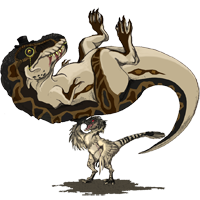
- Posts: 18702
- Joined: Mon Mar 12, 2007 7:17 pm
- Location: NY, USA
Re: Random Topic V3
at a month? at a glance, I'd guess about 6 feet in length would fit the size, but let's see what the calculations say. would depend on the size at birth. Rex is believed to have been little larger than a turkey at birth [so about 4 feet long]. let's assume, due to the apparent size difference, Spino was 4.5 feet long at birth.
Assuming it's full size is 57 feet in length [remember we're using this as an example. not the exact size since we're not 100% sure on the maximum size of Spino], result would be that after a month it'd gain, in length, 0.2375 feet. assuming that that growth is stable all the way through it's life [I know that in reality it isn't, but until we have a reliable growth chart for age:size ratio of Spino like we have for Rex, this is the best we can do without getting into paleobiology, biomechanics and mathematics so mind boggling it would need a computer, or scientist specialising in the field, to figure out reliably], that would result in 2.85 feet a year. 20 years on that same growth would result in a grown size of 57 feet.
so end result would be that Spino, at a month old, would be about 7.35 feet long. not the 43 foot long monstrosity you saw in JP3.
not bad. I was only 1 foot off =D
Assuming it's full size is 57 feet in length [remember we're using this as an example. not the exact size since we're not 100% sure on the maximum size of Spino], result would be that after a month it'd gain, in length, 0.2375 feet. assuming that that growth is stable all the way through it's life [I know that in reality it isn't, but until we have a reliable growth chart for age:size ratio of Spino like we have for Rex, this is the best we can do without getting into paleobiology, biomechanics and mathematics so mind boggling it would need a computer, or scientist specialising in the field, to figure out reliably], that would result in 2.85 feet a year. 20 years on that same growth would result in a grown size of 57 feet.
so end result would be that Spino, at a month old, would be about 7.35 feet long. not the 43 foot long monstrosity you saw in JP3.
not bad. I was only 1 foot off =D
"Ah yes, organised chaos. the sign of a clever but ever-busy mind. To the perpetrator, a carefully woven web of belongings and intrigue, but to the bystander? Madness!"
–William Beckett, Lore of Leyuna RPG

–William Beckett, Lore of Leyuna RPG

-

The Kingpin - Webmaster

- Posts: 22584
- Joined: Thu Jan 01, 1970 12:00 am
- Location: Kuwait
Who is online
Users browsing this forum: No registered users and 35 guests
Powered by phpBB © 2000, 2002, 2005, 2007 phpBB Group
SoftWood design by Free Forum
Time : 0.212s | 10 Queries | GZIP : Off
SoftWood design by Free Forum
Time : 0.212s | 10 Queries | GZIP : Off


